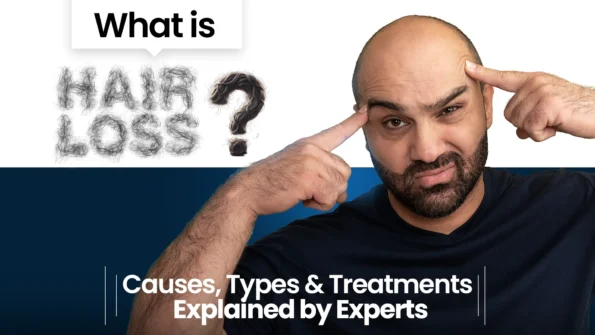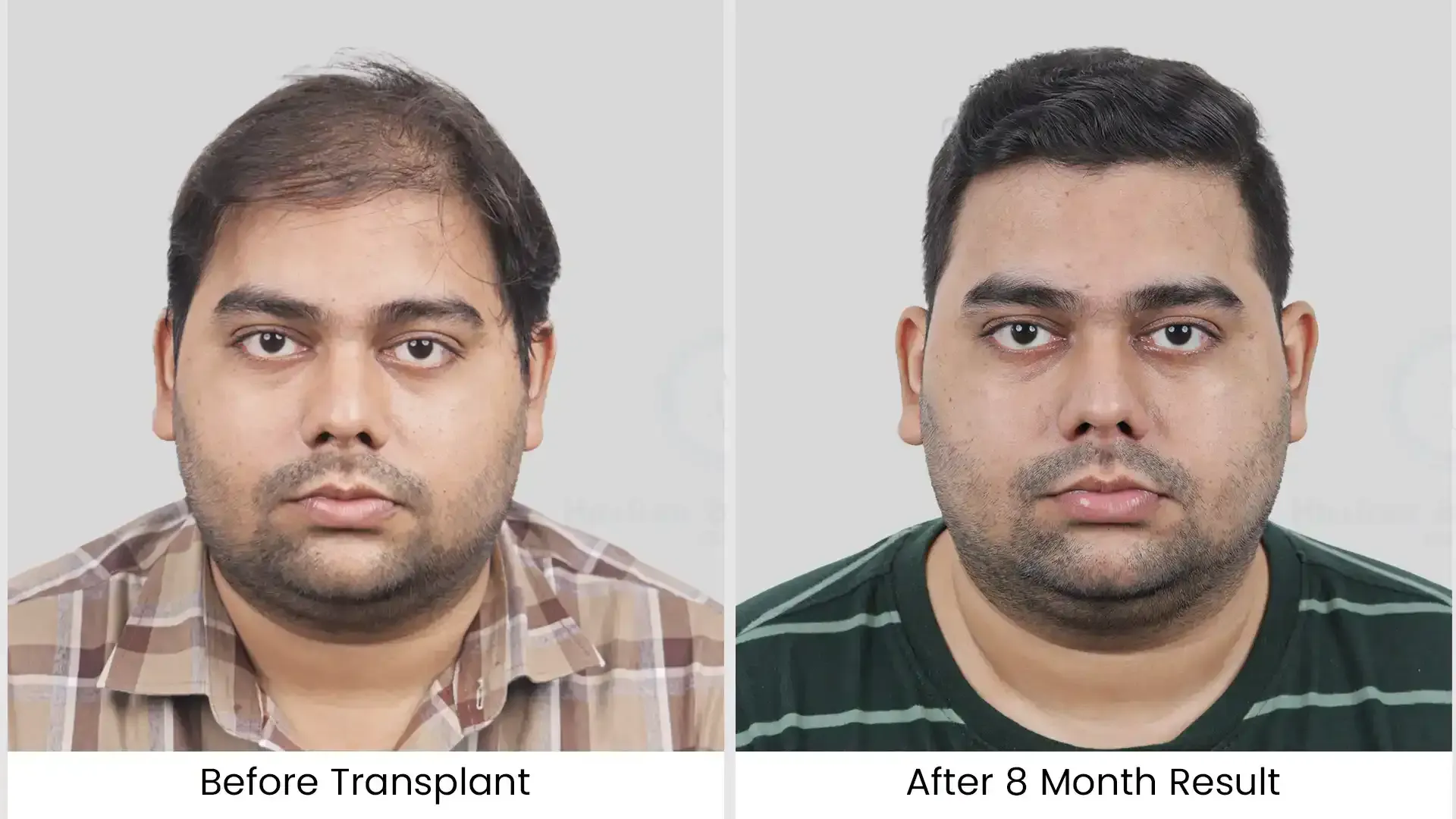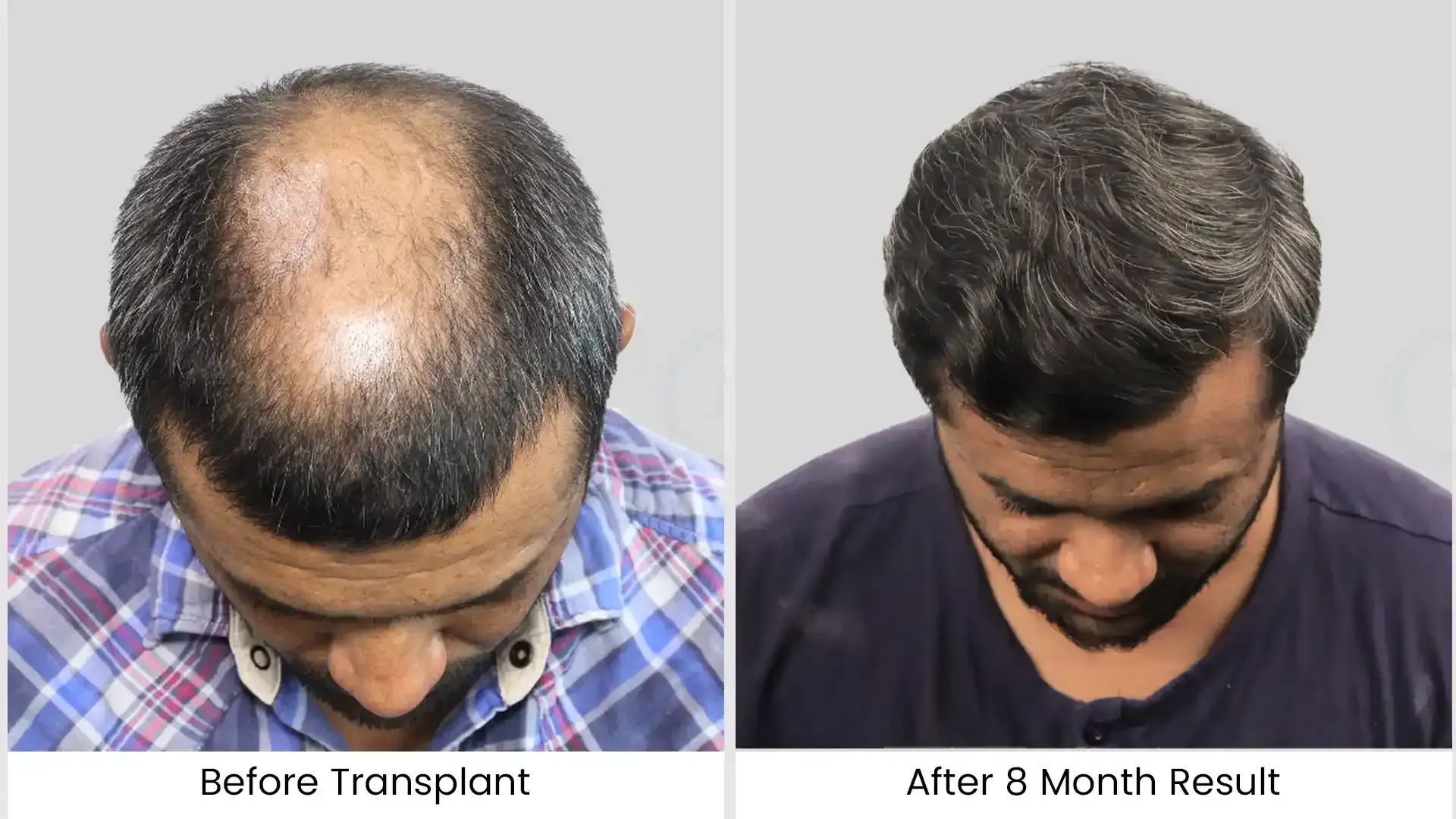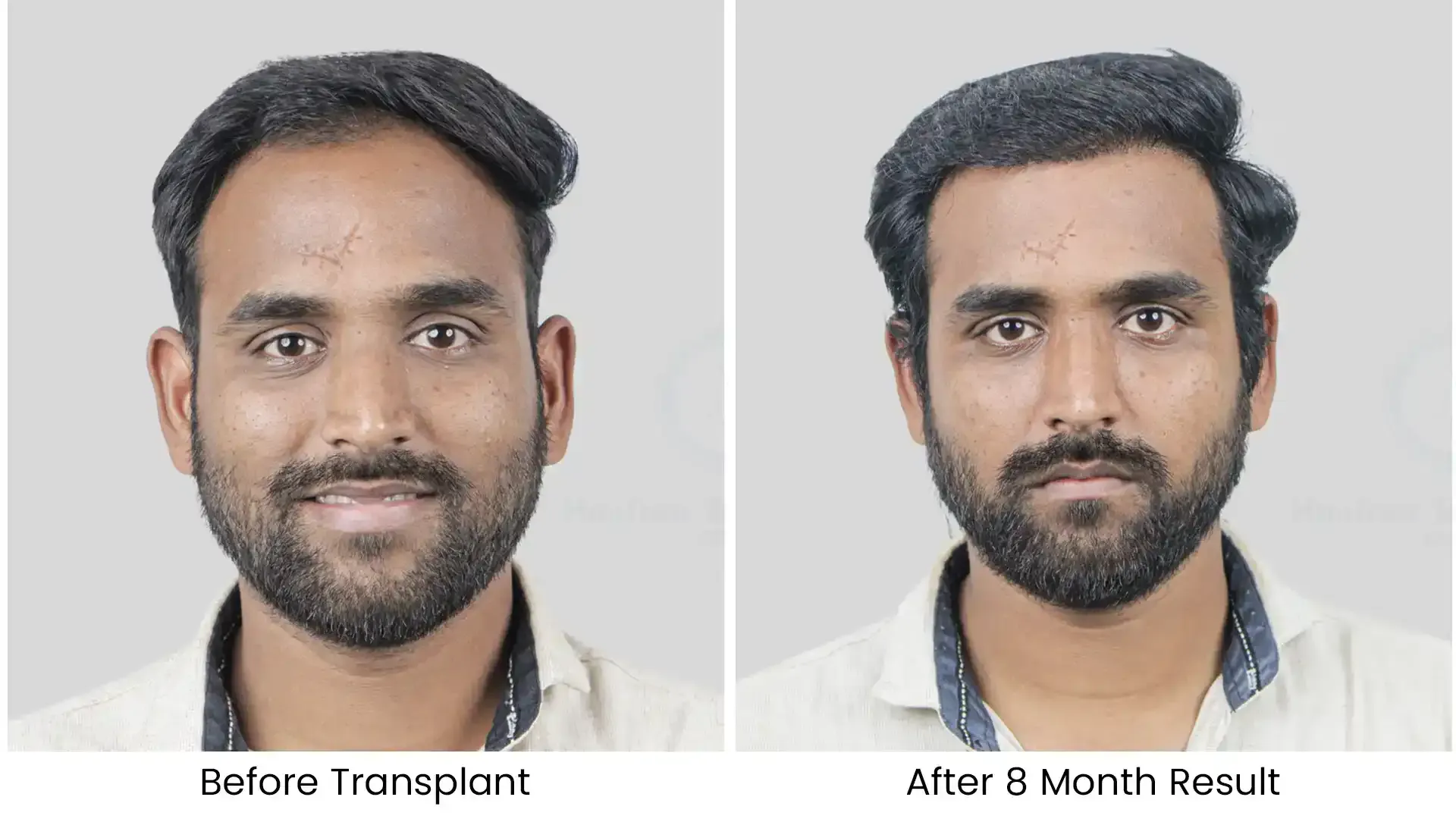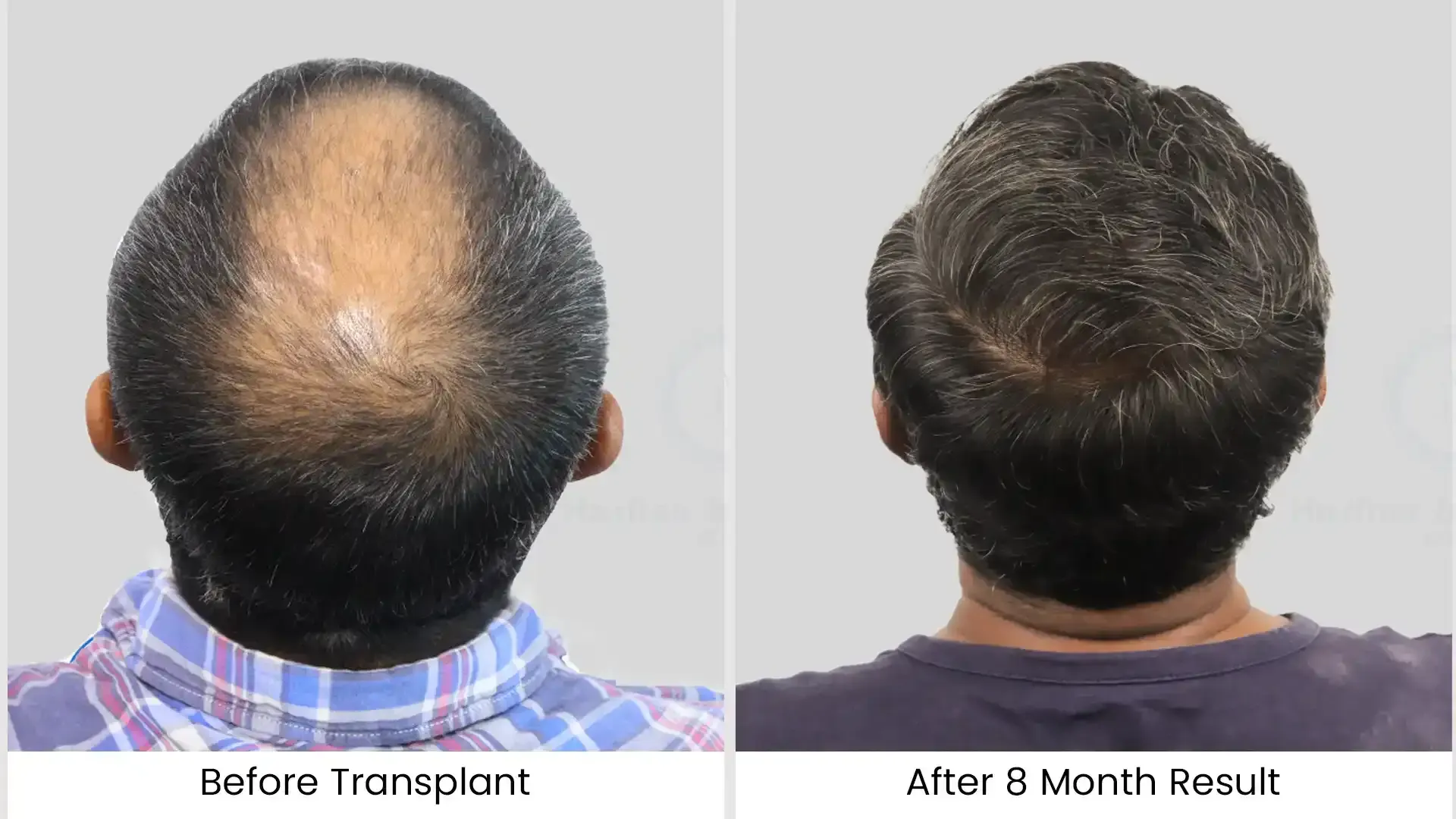Hair loss is often dismissed as a “beauty issue,” but science says otherwise.
Your hair has its own life cycle a delicate balance between growth and rest. When that balance breaks, you notice thinning, shedding, or bald spots.
As dermatologists often remind us, the good news is that many tran are treatable, especially when diagnosed early. In this article, we’ll explain what hair loss really is, the main types, common causes, and practical steps to manage it effectively.
Understanding Hair Loss (Alopecia)
Hair loss happens when the normal cycle of hair growth and shedding is disrupted. Usually, every hair on your scalp grows for 2–7 years, rests for a few months, and then falls out to make space for a new strand.
When that cycle breaks, due to genetics, hormones, or health issues, hair density reduces, and bald spots may appear.
There are many causes of hair loss, but the most common form is Androgenic Alopecia (also known as Male Pattern Baldness or Female Pattern Hair Loss).
How Common Is Hair Loss?
Hair loss is more common than most people think:
- Men: Around 30–50% of men experience noticeable hair loss by age 50.
- Women: About 20–50% of women experience hair thinning at some point in life.
Most men begin losing hair in their late 20s or 30s, while women often notice thinning later, typically between 40 and 60 years of age.
Though age plays a role, hair loss can start as early as your teens or 20s depending on genetics and hormones.
Patterns of Hair Loss: Men vs. Women
Hair loss looks very different between the sexes:
Male Pattern Baldness
In men, hair loss usually begins at the temples and crown, gradually forming an M-shaped receding hairline or complete baldness on top of the scalp.
This pattern is classified using the Norwood Scale — a standard chart used by dermatologists and trichologists to track progression.
Female Pattern Hair Loss
In women, hair loss is more diffuse and subtle. It usually starts with a widening part at the crown or top of the head, while the frontal hairline often remains intact.
Complete baldness is rare in women, but thinning can be emotionally distressing.
Women’s hair loss is also complicated by hormonal changes during pregnancy, menopause, or thyroid imbalance — all of which can temporarily or permanently affect hair density.
Common Types of Hair Loss: Know Yours to Treat It
There are over a dozen types of alopecia, but I’ll focus on the big five based on AAD and NIH data. Each has unique causes of hair loss, and signs identifying yours helps tailor hair loss treatment.
1. Androgenetic Alopecia: The Genetic Culprit
Androgenic Alopecia is responsible for about 95% of male hair loss and at least half of female hair loss cases.
This condition occurs due to a combination of genetic susceptibility and hormonal influence — particularly involving a hormone called dihydrotestosterone (DHT).
How DHT Causes Hair Loss
Both men and women produce testosterone, but some of it converts into DHT (dihydrotestosterone) through an enzyme called 5-alpha-reductase.
For those genetically sensitive to DHT, the hormone binds to hair follicles, causing them to shrink (miniaturize) over time. As a result, hair becomes thinner, shorter, and weaker until it stops growing altogether.
It’s About Sensitivity, Not Just Hormone Levels
Interestingly, studies show it’s not just the amount of DHT that matters — it’s how sensitive your follicles are to it.
Even people with normal or low DHT levels can lose hair if their follicles are genetically prone to react strongly to the hormone.
This explains why some men with high testosterone keep full heads of hair, while others start balding early despite normal hormone levels.
2. Telogen Effluvium: The Stress Shedder
This non-scarring hair loss causes diffuse shedding 2-3 months after a trigger. We’ve seen a surge post-COVID, as reported in a 2022 JAMA Dermatology study—up to 25% of survivors experienced it.
Normally, 10% of hairs shed daily. In telogen effluvium, over 20% enter the shedding phase due to stress (physical, emotional, or physiological). Causes of hair loss include illness, surgery, rapid weight loss, or hormonal changes like postpartum.
It resolves in 6-9 months with trigger removal, but supplements like biotin can help regrowth.
3. Alopecia Areata: The Autoimmune Attacker
An autoimmune condition where the immune system targets follicles, causing sudden, patchy hair loss. The National Alopecia Areata Foundation estimates it affects 6.8 million Americans.
- Mild: Small, round patches on scalp, beard, or eyebrows.
- Severe: Alopecia totalis (full scalp loss) or alopecia universalis (total body hair loss).
It hits all ages and ethnicities equally. Hair loss treatment includes corticosteroids or JAK inhibitors like baricitinib (FDA-approved in 2022). Regrowth is possible in 50-80% of cases.
4. Traction Alopecia: Styling Gone Wrong
Common in people with textured hair (especially African descent), this starts as non-scarring but can scar if ignored. AAD data shows it’s rising due to popular styles like weaves and ponytails.
Causes of hair loss: Chronic tension from tight braids, extensions, or relaxers weakens the shaft, leading to breakage. Curly, coily hair’s helical structure makes it prone to dryness and snaps.
Signs: Fringe thinning along the hairline. Treat hair loss by loosening styles and using moisturizing products. Prevention is key to avoiding permanence.
5. Central Centrifugal Cicatricial Alopecia (CCCA): The Progressive Scar
A scarring alopecia primarily in Black women, per a 2023 Journal of Investigative Dermatology review. It starts at the crown and spreads outward.
Causes of hair loss: Genetic mutations (e.g., in the PADI3 gene) plus triggers like heat styling or inflammation. Once called “hot comb alopecia,” that’s outdated—it’s not just from combs.
Early signs: Patchy vertex loss; advanced: Shiny, scarred scalp. Hair loss treatment focuses on anti-inflammatories and stopping aggravators for stabilization.
Type of Hair Loss | Category | Common Causes | Who It Affects Most | Treatment Outlook |
Androgenetic Alopecia | Non-Scarring | Genetics, DHT | Men & Women (adults) | Good with meds |
Telogen Effluvium | Non-Scarring | Stress, Illness | All ages, post-COVID | Excellent, self-resolves |
Alopecia Areata | Non-Scarring | Autoimmune | All ethnicities, kids-adults | Variable, 50-80% regrow |
Traction Alopecia | Non-Scarring to Scarring | Tight styles | Women of color | Reversible if early |
CCCA | Scarring | Genetics + Trauma | Black women | Stabilize, not reverse |
Actionable Tips to Treat Hair Loss: Start Today
Knowledge is power, but action changes everything. Here are five evidence-based steps from AAD guidelines to treat hair loss.
Tip 1: See a Dermatologist ASAP
Early diagnosis boosts success rates by 70% (AAD stats). Don’t wait—book a board-certified derm for a full exam, possibly including biopsy or blood tests for thyroid/iron levels.
Tip 2: Prep Like a Pro for Your Appointment
Jot down:
- Symptoms: Itch? Pain? Fatigue?
- History: Family hair loss, meds, supplements.
- Photos: Old vs. new hair pics.
- Products: List shampoos, oils—snap pics!
- Bloodwork: Bring recent results for deficiencies.
This speeds diagnosis and hair loss treatment.
Tip 3: Ditch Damaging Styles
Avoid tension: Loosen braids, skip daily ponytails. Choose “protective” styles that truly protect—consult a scalp-savvy stylist. If it hurts, stop! Remove styles pre-appointment for clear scalp views.
Tip 4: Boost with Supplements and Topicals
- Supplements: Vitamin D (deficient in 40% of hair loss cases, per NIH), zinc, or Nutrafol (clinical trials show 80% improvement).
- Probiotics: Gut health links to scalp via microbiome studies.
- Topicals: Minoxidil (5% foam, FDA-approved); rosemary oil (matches minoxidil in trials); pumpkin seed oil.
- Devices: Low-level light therapy (LLLT) combs—meta-analyses confirm 20-30% density increase.
Consult a doc first—side effects are rare but real.
Tip 5: Stress Less, Hair More
Chronic stress triggers 30% of telogen cases (Mayo Clinic). Try yoga, meditation, or walks break the cycle.
Advanced Treatments for Hair Loss: PRP & Hair Transplant
While topical treatments and medications can help in the early stages, moderate to severe hair loss may require advanced medical treatments for noticeable, long-term results. Two of the most effective dermatologist-recommended options are PRP therapy and Hair Transplant surgery.
Once a diagnosis of Androgenic Alopecia is confirmed, several clinically proven treatments can slow or even reverse the process.
1. Minoxidil (Topical or Oral)
A widely used over-the-counter solution that boosts blood flow and nutrients to the scalp, prolonging the hair growth phase.
2. Finasteride / Dutasteride
Prescription medications that block the conversion of testosterone into DHT, helping preserve and regrow hair — especially effective for men.
3. Spironolactone
An anti-androgen often prescribed to women with hormonal hair loss.
4. Ketoconazole Shampoo
An antifungal shampoo that may reduce scalp inflammation and lower local DHT activity.
5. Platelet-Rich Plasma (PRP) Therapy — Boosting Natural Regrowth
What it is:
PRP (Platelet-Rich Plasma) therapy uses your own blood to stimulate hair follicles naturally. Your blood is drawn, spun in a centrifuge to separate platelets (growth factors), and then injected into thinning areas of the scalp.
How it works:
Platelets contain proteins that promote cell regeneration and blood flow to dormant follicles, encouraging new hair growth and improving hair thickness.
Best for:
- Androgenetic Alopecia (pattern baldness)
- Telogen Effluvium (stress-related shedding)
- Post-hair-transplant healing
Treatment process:
- Usually 3–4 sessions spaced one month apart, followed by maintenance every 6–12 months.
- Minimal downtime; mild redness or soreness may occur for 1–2 days.
Effectiveness:
According to the Journal of Cutaneous and Aesthetic Surgery (2022), PRP can increase hair density by up to 30–40% in patients with early-stage alopecia.
6. Hair Transplant — Permanent Solution for Baldness
What it is:
A hair transplant is a surgical procedure where healthy hair follicles are taken from the back or sides of your scalp (donor area) and transplanted into bald or thinning areas (recipient area). It offers permanent, natural-looking results.
Techniques used:
- FUE (Follicular Unit Extraction): Individual follicles are extracted and implanted; minimally invasive with faster recovery.
- FUT (Follicular Unit Transplantation): A thin strip of scalp is removed and divided into grafts; suitable for covering larger bald areas.
Best for:
- Advanced pattern baldness (Norwood grade 4–7 in men, Ludwig grade 2–3 in women)
- Patients who’ve not responded to medications or PRP
- Restoring beard, eyebrows, or scarred areas
Recovery and results:
- Minor swelling and redness may occur for a few days.
- Transplanted hair starts growing naturally within 3–6 months, with full results in 9–12 months.
Longevity:
Because transplanted follicles are resistant to DHT (the hormone causing hair loss), results are permanent with proper scalp care.
Expert Insight:
Modern clinics often combine PRP + Hair Transplant PRP speeds up healing and improves graft survival rates, leading to denser and more natural outcomes.
Final Thoughts
Hair loss can be emotionally challenging, but it’s important to remember you are not alone, and most forms of hair loss are treatable. The key is early diagnosis, gentle hair care, and consistent treatment guided by a professional.
If you’re struggling with hair shedding or thinning, consult a board-certified dermatologist or trichologist today. With the right guidance, your hair and confidence can grow back stronger than ever.
Ready to Regrow Your Confidence?
Don’t let hair loss hold you back take the first step toward a fuller, healthier head of hair with Hairfree & Hairgrow Clinic, India’s most trusted name in advanced hair plantation and PRP treatments.
Our team of expert dermatologists and trichologists offers personalized hair restoration plans using the latest technology and proven techniques.
Book your free consultation today and discover the best treatment for your unique hair loss condition.
FAQs About Hair Loss
1. Can hair grow back after hair loss?
Yes, in many cases, hair can grow back — especially in non-scarring types like androgenetic alopecia or telogen effluvium. However, permanent (scarring) alopecia cannot regrow lost hair because the follicles are destroyed. Early diagnosis and proper treatment greatly improve your chances of regrowth.
2. What is the best treatment for hair loss?
The right treatment depends on the cause. Common options include Minoxidil (Rogaine), Finasteride, PRP (Platelet-Rich Plasma) therapy, and hair transplant surgery. Dermatologists may also suggest low-level laser therapy or supplements if needed.
3. Can stress really cause hair loss?
Yes. Chronic stress can trigger a condition called telogen effluvium, where hair enters the shedding phase prematurely. Managing stress through sleep, exercise, meditation, and a healthy diet can help reverse this type of hair loss.
4. Are hair loss shampoos effective?
Most shampoos don’t regrow hair, but they can improve scalp health, reduce breakage, and support other medical treatments. Look for ingredients like biotin, caffeine, ketoconazole, or saw palmetto for the best results.
5. When should I see a dermatologist for hair loss?
You should consult a dermatologist if you notice sudden shedding, bald patches, thinning along the part line, or a receding hairline. Early evaluation helps identify the cause and start effective treatment before permanent damage occurs.
Written By
MBBS, DDV
Dr. Jinkal Kunjadiya is a trusted hair restoration specialist with in-depth expertise in What Is Hair Loss and its underlying causes. He provides accurate diagnosis, effective treatments, and personalized care to help patients understand, manage, and prevent hair loss for long-term scalp health and confidence.
Disclaimer
We’ve made all possible efforts to ensure that the information provided here is accurate, up-to-date and complete, however, it should not be treated as a substitute for professional medical advice, diagnosis or treatment. See Detailed Disclaimers Here.

